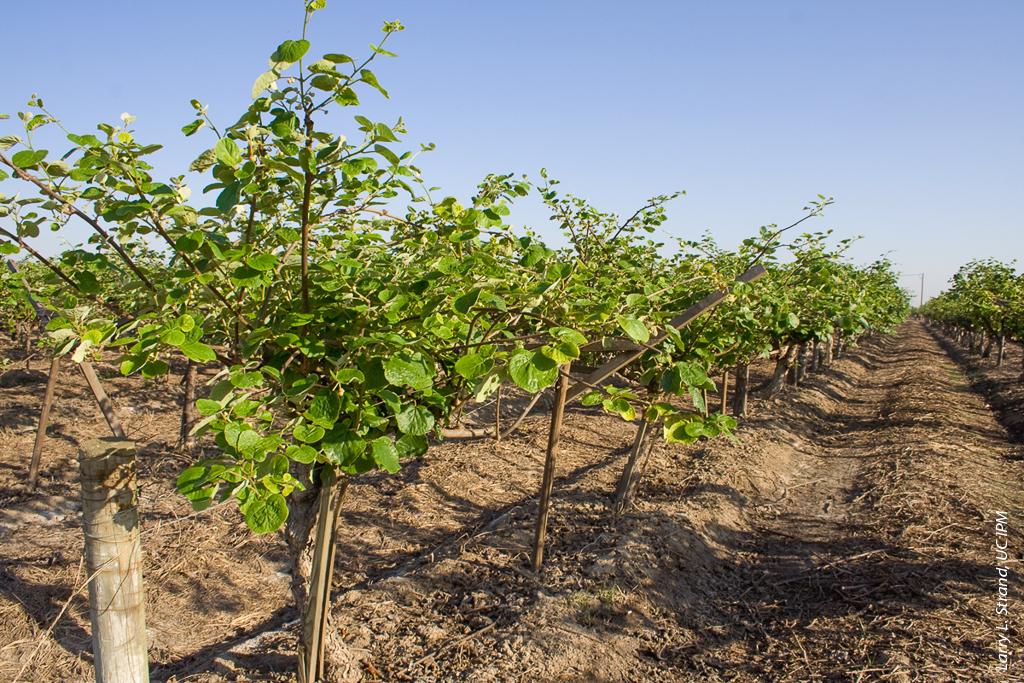All Issues
The Rise of the Kiwifruit
Publication Information
California Agriculture 68(3):96-96. https://doi.org/10.3733/ca.v068n03p96
Published online July 01, 2014
Full text
In the 1970s, California farmers became interested in a new exotic crop — kiwifruit. The fruit, native to China, was first grown commercially in New Zealand and named the Chinese gooseberry. In the 1950s, when New Zealand first began exporting the fruit commercially, its name was changed to kiwifruit due to its slight resemblance to the country's national bird, the brown, rotund and spiky-feathered kiwi.
Kiwifruit was very well received in the United States, and its popularity began growing rapidly. California growers began to experiment with the unfamiliar fruit, and the state's first commercial production began in the mid-1960s. By 1971, nearly 100 acres of kiwifruit had been planted, mostly in Butte and Kern counties. But many growers were unsuccessful with these early kiwifruit endeavors, as little was known about growing, processing or marketing the fruit here in California. Recognizing the need for more information, UC Cooperative Extension (UCCE) pomology specialist Jim Beutel began researching the new crop, acknowledging in one 1977 article that “the kiwifruit's external appearance is not particularly attractive.” But, he added, “the flesh is an attractive emerald green color and has numerous small, jet-black, edible seeds.”
By the 1980s, kiwifruit production in California had skyrocketed, with the industry increasing 667% to keep up with the growing demand. Beutel was instrumental in supporting the industry's expansion doing research publishing information providing one-on-one consultations to growers all over the state and helping other UCCE farm advisors put on kiwifruit short courses in their communities.
Today, thanks to the work of Beutel, kiwifruit is a mature industry in the state. California kiwifruits are exported all over the world and make up 98% of the kiwifruit industry in the United States. The fruit also provides an important alternative crop for growers who specialize in tree fruits or table grapes.






